1 What is Matcha?
Matcha is made by steaming fresh tea leaves, drying them without rubbing, and grinding them into a powder using a millstone.
While the tea commonly consumed is powdered sencha, matcha is powdered tencha.
By cultivating the tea leaves in a way that blocks sunlight, as is done with Tencha, the tea leaves have a savory aroma called "kabusekou," which is less astringent and has a sweet taste.
In addition,matcha has many nutrients and is expected to have a variety of benefits, including antioxidant properties and immune enhancement. Unlike other teas, the powdered tea leaves are taken directly into the body, so nutrients can be taken in without any excess.
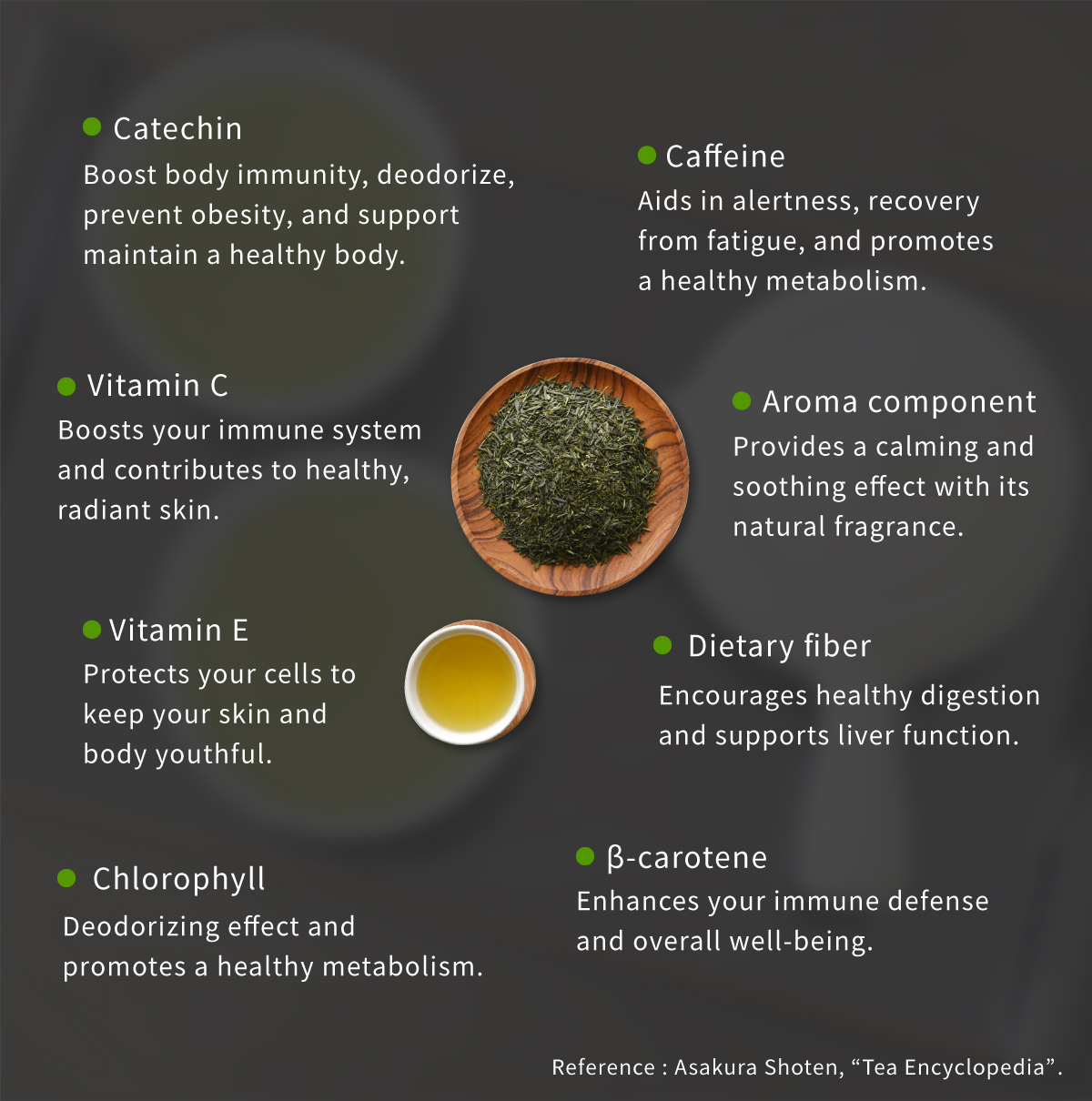
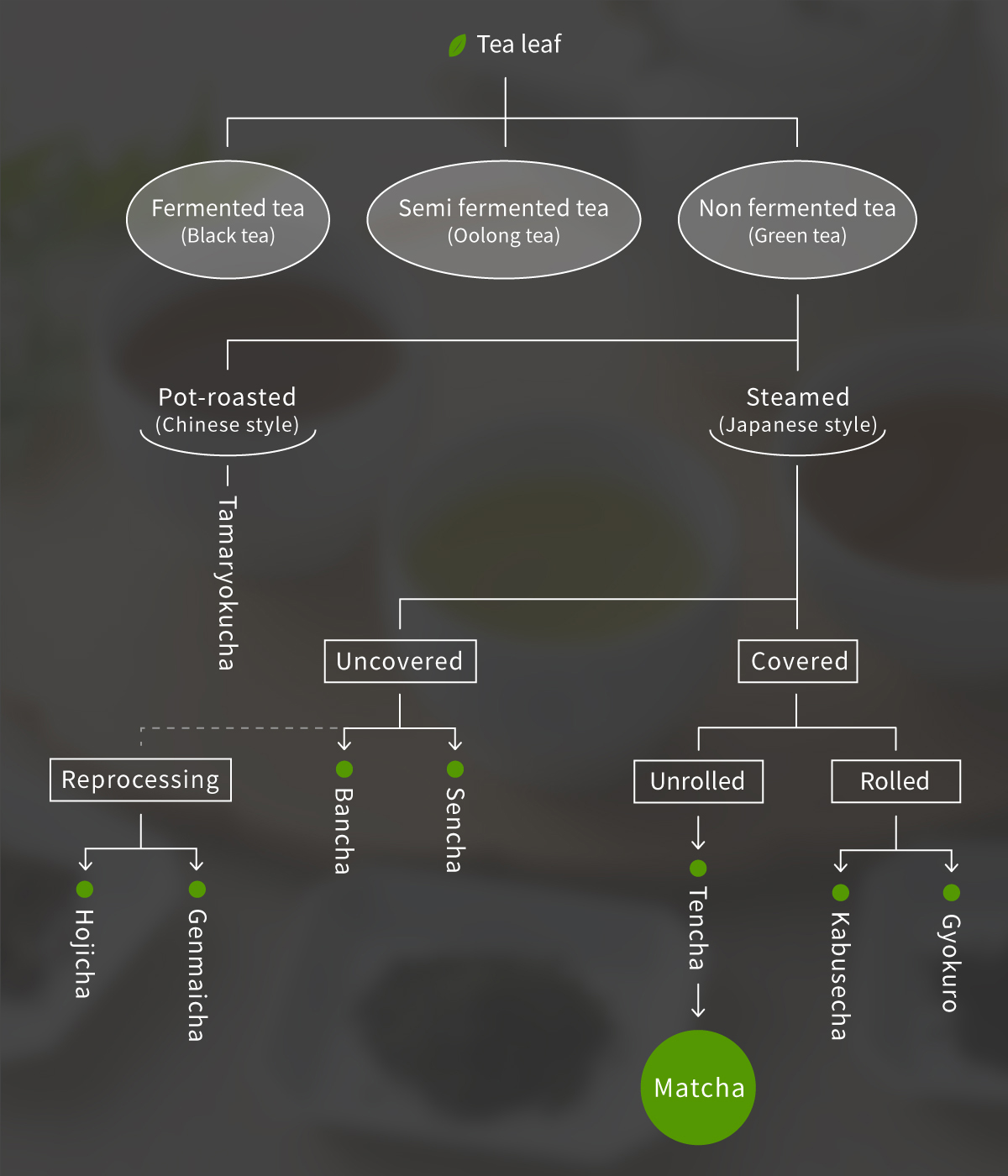
2 History of Matcha
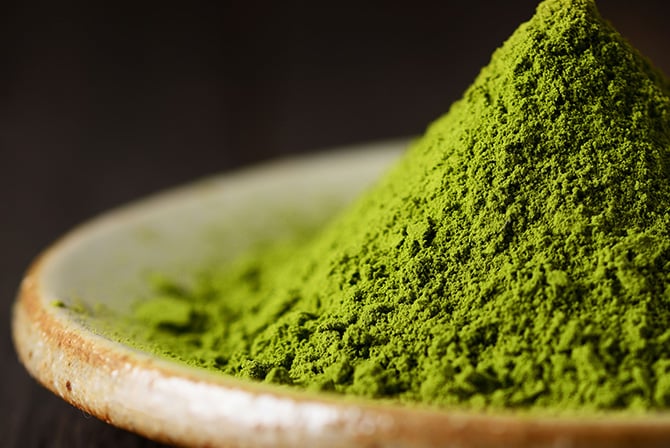
There are various theories as to where it originated, but it is believed to have been discovered by Shen Nong, the founder of Chinese medicine, who was active in China around 2800 BC.
It is said that Shen Nong traveled through the fields and mountains to study the medicinal properties of plants and trees, and that he was exposed to as many as 72 poisons in a day, each time detoxifying himself by chewing tea leaves.
Tea has long been considered a drink that helps maintain good health because of its rich content of catechins, theanine, vitamins, and other ingredients.
Later, it became popular in China as a type of Chinese herbal medicine, and around 760, the world's oldest book on tea, "Tea Sutra," was produced.
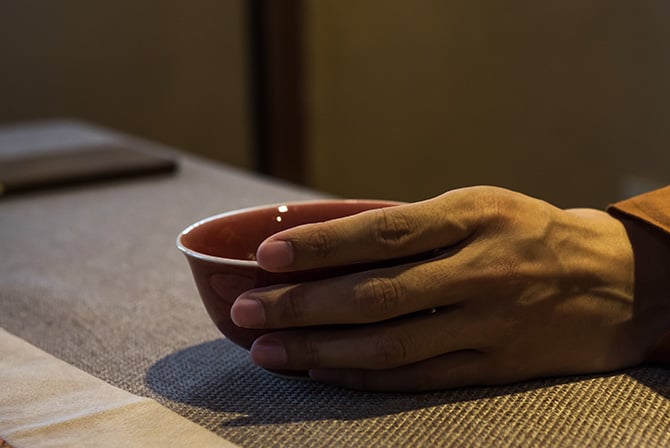
Around 820, tea was introduced to Japan by Japanese envoys to the Tang Dynasty who brought back tea seeds from Tang.
However, tea at that time, like in China, was treated as a beverage for medicine and health, and because of its precious existence, only the upper classes, such as the aristocracy and influential people, could drink it, and the Japanese tea culture was once abandoned.
Tea became popular among the general public around 1191.
Zen Master Eisai, founder of the Rinzai sect of Zen Buddhism, brought back tea seeds from China and handed down the Matcha method, in which tea powder is mixed in hot water and stirred. Later, he presented his book "Kicha Yoseiki," which describes the types of tea and their effects, and this led to the spread of the tea drinking custom in Japan.
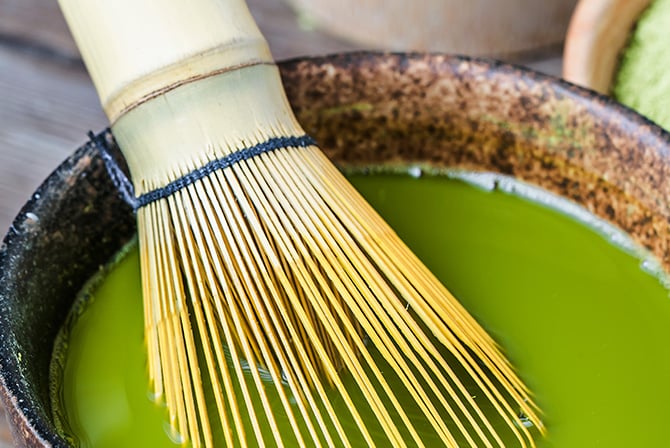
The culture of chanoyu spread as something enjoyed by the upper classes.
In the Muromachi period, while the tea ceremony culture of the upper classes was characterized by "luxury," a new tea ceremony etiquette that "valued simplicity and beauty" was introduced by the monk Murata Shuko.
This form of tea, enjoyed in a quiet room with a cup of tea, was called "soan-no-cha",and was later called "wabicha".
Influenced by Noami and the Rinzai Zen priest Ikkyu Sojun, Shukoh pursued the spirit of Noh, renga, and Zen, and is said to have discovered the spirit of "wabicha," a new way to enjoy tea.
That's how "Wabicha" was established around the middle of the Muromachi period by Sakai's wealthy merchant and tea master, Takeno Shao'o.At this time, the tea ceremony was enjoyed in "soan-no-cha",and Shao'ou referred to a small tea room of about 2.5 to 3.5 tatami mats as a "wabashiki".
It is also said that the tea gardens in Uji were given special treatment by the third shogun, Ashikaga Yoshimitsu, which led to the development of Uji as a famous producer of powdered green tea.
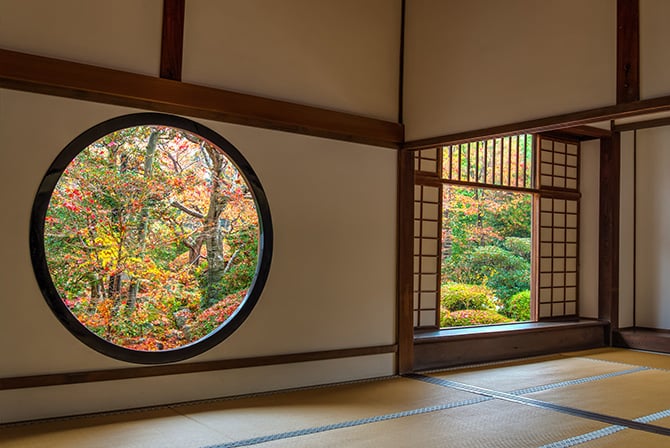
Then, in the Azuchi-Momoyama period, Sen no Rikyu, famous for his tea, appeared.He brought to fruition the "wabicha" style of tea established by Shuko and Shaowo.
Rikyu was also selected as a tea master to serve tea at the tea ceremonies of Nobunaga Oda and Hideyoshi Toyotomi, and worked to develop the culture of chanoyu on many occasions.
This way of drinking is unique to Japan, and the tea culture handed down from China was also perfected as "Japanese culture and tea ceremony" leading to the present day."
3 Modern Matcha
Today, matcha has spread from Japan to countries around the world, and the word "MATCHA" is used universally.More and more restaurants overseas are enjoying drinks and sweets made with matcha green tea.
However, since there is still no international definition of matcha, products that cannot be called matcha are now being distributed amid the global demand for matcha.
In response to this situation, the National Agricultural Research Organization is taking the lead in a move to make the cultivation and production process in Japan an international standard under the International Organization for Standardization (ISO) standards.
